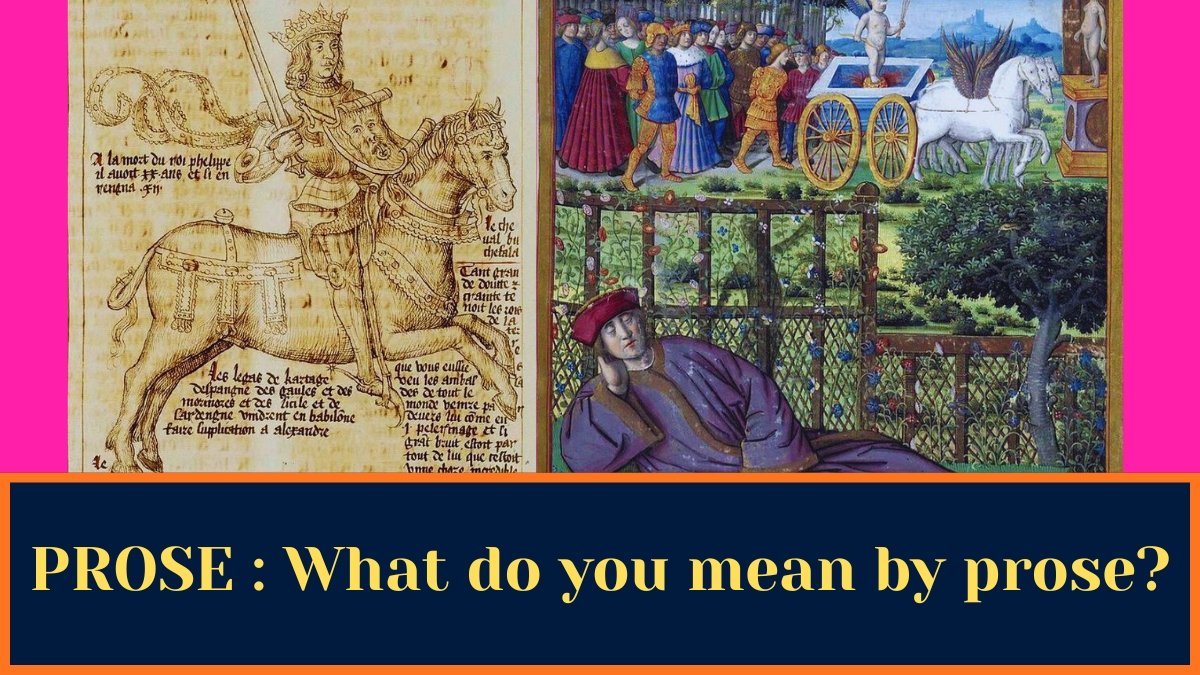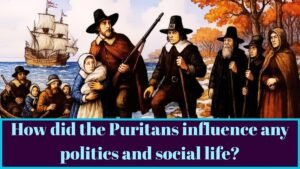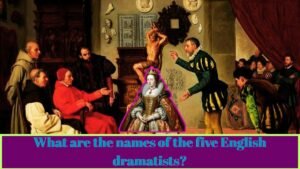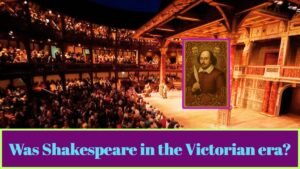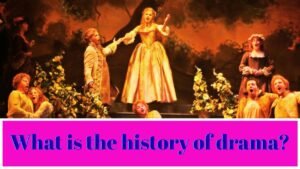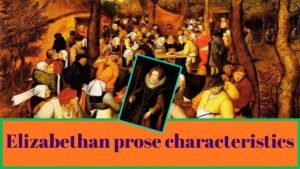PROSE : What do you mean by prose?
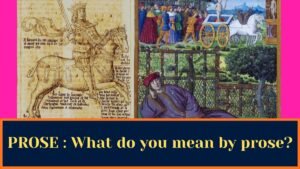
English Prose in the Fifteenth Century
The Prose of the fifteenth century was still in a preparatory stage and offers little that has literary or artistic interest beyond the work of two authors-Malory and Berners. It was a period of prepara-tion during which English prose was exercised by being put to various uses: romance, history, law, politics and theological contro-versy. The learned, for the most part, wrote in Latin, the inter-national language which was still the favourite. The native langu-age was in a fluid state, formless and indefinite in its grammar and vocabulary. It was changing so rapidly that Caxton, the first English printer, who set up his printing press in 1476, found the language in his old age very different from what it had been in his childhood. He was not certain what kind of language would be generally understood or would please the public. In poetry Chaucer had provided a model, but no great writer had provided such a model for prose. Caxton loved poetry and printed Chaucer’s works as well as those of Lydgate and Gower. But he was fasci-nated by French prose and wanted to achieve the same clarity and grace in English. Besides, he was a businessman who wanted to make a living, and in the fast increasing educated class there were more readers of prose than of poetry. Though not a great scholar, he was a lover of books and being enterprising he himself under-took the work of providing his reading matter, mostly by translat-ing French romances. Caxton thus is an important figure in the history of English prose, for he stimulated and in part satisfied the appetite of the new generation of readers for prose stories. It was he who printed Malory’s Morte d’Arthur destined to become the greatest book of the fifteenth century.
Of other writers the briefest mention is all that is possible in this history. Nobody today would waste his time over Pecock’s Repressor of Overmuch Blaming of the Clergy, a defence of ortho-doxy against the attacks of Wycliff and his followers. Sir John
Fortesque’s treatise on the Governance of England may interest constitutional pundits or British patriots. But there is one passage in it which has become famous for its chauvinism. Contrasting the fearless independence of the English with the cowardly slavishness of the French, Sir John extols even English highwaymen. Robbery, he argues, implies courage, but the French are too cowardly even to rob or steal! The spelling of this Chief Justice of England is the most grotesque in this age of fanciful spelling.
It is customary to include in the prose of this period the Paston Letters. This is a collection of letters exchanged between members of a middle-class family over the period 1422-1509. They are ordinary letters concerned with the business of living, buying and managing property, lawsuits and the like. There is nothing literary about them and and they cannot be classed as literature. So we come to Malory and Berners.
Malory’s Morte d’Arthur was printed in 1485 by Caxton whe says that the manuscript was given him by Sir Thomas Malory, Knight. He is said to have been a Lancastrian and a member of Parliament. He died in 1471. His book, a translation from a large number of French sources, is the largest single collection of …hurian legends in English.
It is easy enough for criticism to pick holes in this book; to say, for example, that it is a loose compilation which has no unity of Theme or plot. But considering the vast and scattered material that Malory had to deal with, one cannot but admire the skill and discrimination with which he reduced such a heterogeneous mass to a coherent sequence, however imperfect. As regards unity, the book has a higher unity than that of thought though or plot, namely, the unity of tone and atmosphere. The atmosphere of the fairy tale, of the magical and the marvellous, and of a twilight melancholy is all-pervasive. What is more, the book sums up in itself all the virtues and vices of the age of chivalry, real or fancied. “Herein may be seen”, in the words of Caxton’s preface, “noble chyvalrye, curtosye, humanyte, friendlynesse, hardynesse, love, frendshyp, cowardyse, murdre, hate, vertue and synne. Doo after the good and leve the evyl and it shal brynge you to good fame and renommee.”
Malory writes in a style of childlike simplicity which sometimes becomes childish. We get a succession of sentences beginning with Then, And then, And so then. The book is full of castles, tournaments, heroic battles and single combats, which is apt to be-come tiresome to the modern reader. But the author is intent on telling his story without a trace of self-consciousness, elaboration or finesse. The result is a poetic pro prose well suited to its purpose, and this is the highest merit of style. The charm of the book has never been denied, though Roger Ascham condemned it on the ground of morals; for the loves of Laur.celot and Guinevere are sinful, and yet they are held up as ideal lovers. This puritanical criticism is based on misunderstanding. True to the tradition of old romances Malory portrays courtly or chivalric morality, not religious mora-lity. Such contradictions are part of the unreal world of chivalry. All in all, Malory’s Morte d’Arthur is the greatest book in prose or verse between Chaucer and Spenser. Besides its intrinsic worth, it is the one great storehouse of those myths and legends of King Arthur which have had such fascination for English poets, specially Tannyson, whose Idylls of the King are almost entirely based on it. The following passage tells how the body of the Lady of Shalott arrived in a boat before King Arthur.
How the corps of the Mayde of Astolat arryved before King Arthur: Soo by fortune (chance) kynge Arthur and the quene Guenevere were spekynge to-gyders at a wydowe, and soo as they looked in to Temse (Thames) they aspyed this black barget, and hadde marvelle what it mente. Thenne the kynge called sire Kay & shewed hit hym. ‘Sir,’ said sir Kay, ‘wete you wel there is some newe tydynges’. ‘Goo thyder’, sayd the kynge to sir Kay, ‘and take with yow sire Brandyles and Agravayne and brynge me redy word what is there’. Thenne those four knyghtes departed and came to the barget and wente in, and there they fond (found) the fayrest corps lyenge in a ryche bedde and a poure man sittyng in the bargets ende, and no word wold he speke. Soo these foure knyghtes retorned unto the kynge agcyne and told hym what they fond. ‘That fayr corps wylle 1 see’, sayd the kynge. And soo thenne the kynge took the quene by the hand & went thydder. Thenne the kynge made the barget to be holden fast, and thenne the kynge and the quene entredwith certayn knyghtes wyth them, and there he sawe the fayrest woman lye in a ryche bedde, coverd unto her myddel with many ryche clothes, and alle was of clothe of gold, and she lay as though she had smyled. Thenne the quene aspyed a letter in her ryght hand and told it to the kynge. Thenne the kynge took it and sayd, ‘Now am I sure this letter wille telle what she was, and why she is come hydder.” Soo thenne the kynge and the quene wente oute of the barget, and so commaunded a certayne wayte (watch) upon the barget. And soo whan the kynge was come within his chamber he called many knyghtes aboute hym, and saide that he wold wete (know) openly what was wryten within that letter. Thenne the kynge brake it, and made a clerke to rede hit, and this was the entente (purport) of the letter: Most noble knyghte sir Launcelot, now hath dethe made us two at debate for your love. I was your lover that men called the fayre mayden of Astolat. Therefor unto alle ladyes I make my mone. Yet praye for my soule and bery me atte (at the) leest, and offre ye my masse peny. This is my last request. And a clene mayden 1 dyed, I take God to wytnes. Pray for my soule, sir Launcelot, as thou art pierles (peerless)’. This was alle the substance in the letter, and whan it was redde the kynge, the quenc, and alle the knyghtes wepte for pyte of the doleful complayntes.
Berners (1467-1533). The second great writer of this century is
(Book xviii. Chap. 20)
Lord Berners who was for sometime Lord Chancellor and then Governor of Calais. The most notable of his many translations from French are Froissart’s Chronicles and Huon of Bordeaux. Not less notable is his Golden Book of Marcus Anrelius, a translation from the Spanish of Guevara. Froissart’s Chronicles became a source-book as well as a model for future historians like Hall and Holinshed. Froissart was a French historian and his book deals with the affairs of France, Flanders, England, Spain and Portugal during the fourteenth century. Huon of Bordeaux is a French romance of the 13th century and is introduce Oberon, the fairy king. important as the first book to With his help Huon achieved apparently impossible adventures in the reign of Charlemagne. His Golden Book of Marcus Aurelius was the first work of highly ornate prose which soon became fashionable and ultimately led to Euphuism With him we are at the threshold of Humanism and he may be regarded as a link between the two ages.
The Drama
It now remains to consider the drama which also made its appearance as a distinct and well-established form of English literature in the fifteenth century. The consideration of this subject, however, must be reserved for a later chapter.
